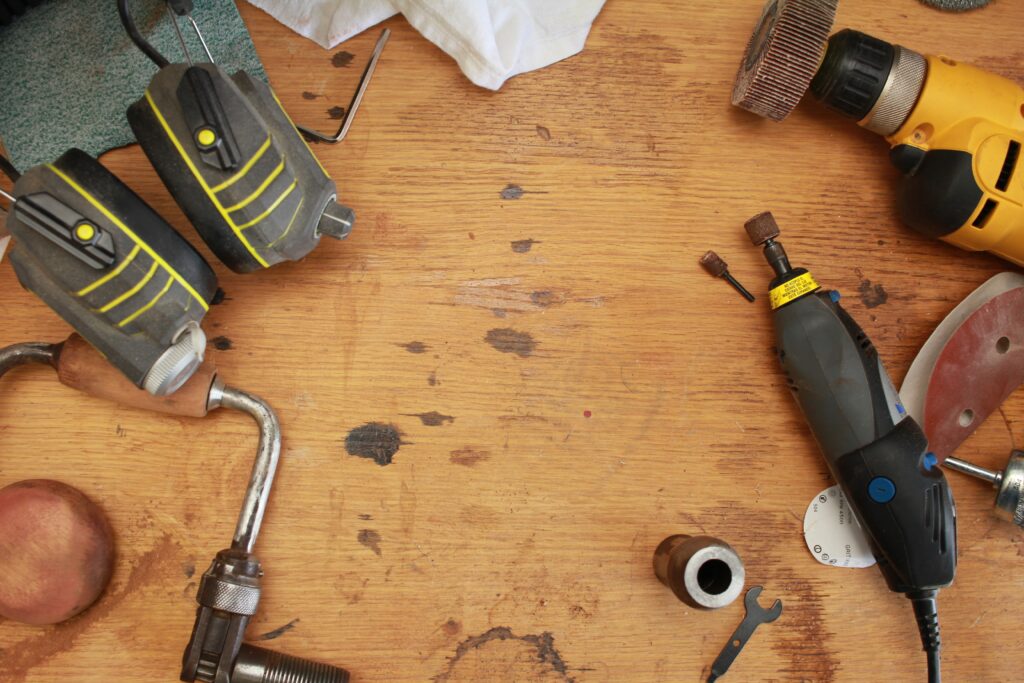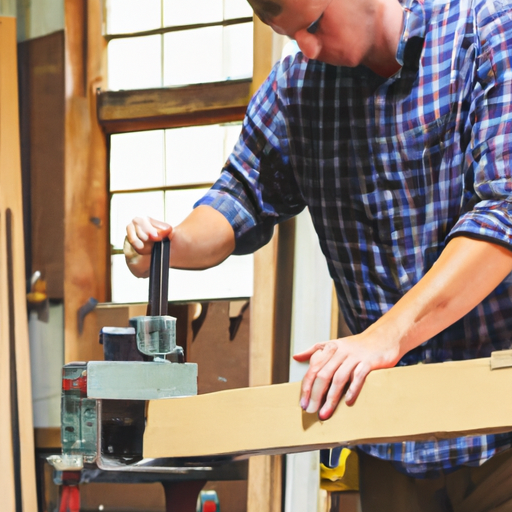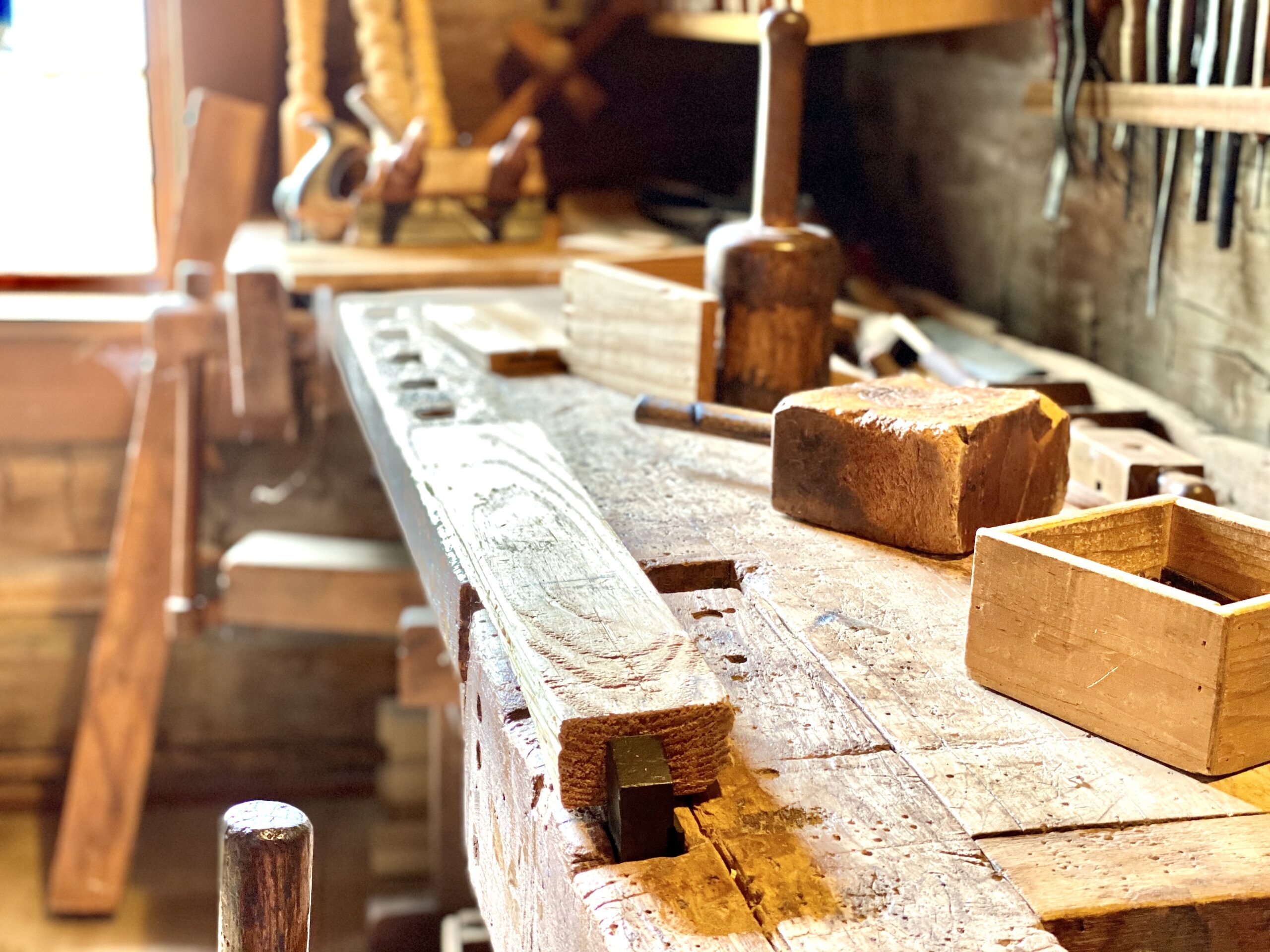Are you ready to take on your next DIY project? Before you dive into the world of construction and carpentry, it’s important to choose the right workbench that will serve as your trusty companion. Whether you’re a seasoned DIY enthusiast or just starting out, the right workbench can make all the difference in terms of efficiency, comfort, and overall productivity. In this article, we will guide you through the process of selecting the perfect workbench for your specific needs, ensuring that your DIY projects are a breeze from start to finish. So, let’s get started on finding your workbench soulmate!
1. Determine Your Needs
To choose the right workbench for your DIY projects, it is important to first determine your needs. Assessing your DIY projects will help you understand the specific requirements of the workbench. Consider the types of projects you frequently undertake and the tools and materials you use. This will give you an idea of the size and weight capacity required for your workbench.
Next, take a look at your available workspace. Measure the dimensions of the area where you plan to place the workbench. This will help you determine the ideal size of the workbench that will fit comfortably in your workspace.
In addition to size, evaluate the weight capacity required for your projects. Some DIY projects may involve heavy tools or materials, so it is important to choose a workbench that can safely support the weight. Consider the maximum weight capacity of the workbench and ensure it meets your requirements.
Lastly, think about the required storage space. Depending on the number of tools and materials you have, you may need a workbench with built-in drawers, shelves, or cabinets for convenient storage. Assess your storage needs and choose a workbench that offers adequate space for organization.
2. Consider the Workbench Size
Once you have determined your needs, it is time to consider the size of the workbench. Measure your available space to ensure that the workbench will fit comfortably in your workshop or garage. Consider the dimensions of the workbench, including width, depth, and height.
When determining the ideal workbench dimensions, think about the types of projects you typically work on. If you often work on large projects that require a lot of workspace, you may want to consider a larger workbench. On the other hand, if you primarily work on smaller projects, a smaller workbench may be more suitable.
Keep in mind that a workbench that is too large for your space can make it difficult to maneuver around, while a workbench that is too small may limit your workspace. Finding the right balance in size is crucial for optimal functionality.

3. Explore Different Workbench Styles
There are various styles of workbenches available, each offering its own unique features and benefits. Exploring different workbench styles will help you find the one that best suits your needs and preferences.
Standard workbenches are the most common type and are designed for general DIY projects. They typically feature a solid work surface and offer basic storage options such as drawers or shelves.
Foldable workbenches are ideal for those with limited space. These workbenches can be easily folded and stored when not in use, allowing you to maximize your workspace.
If you prefer a workbench that can be adjusted to different heights, consider an adjustable height workbench. This type of workbench allows you to customize the height to suit your comfort and the specific task at hand.
For those who require mobility, mobile workbenches are a great option. These workbenches are equipped with wheels, making it easy to move them around your workspace as needed.
Modular workbenches are designed to be customizable and adaptable. You can add or remove modules to create a workbench that meets your specific requirements. This flexibility is ideal for DIYers who have changing project needs.
Finally, wall-mounted workbenches are a space-saving option. These workbenches can be mounted on the wall, freeing up floor space in your workshop or garage.
4. Assess the Workbench Material
When it comes to choosing the material for your workbench, there are three main options: wood, metal, and plastic. Each material has its own advantages and considerations, so it is important to assess them before making a decision.
Wooden workbenches are popular for their classic and natural look. They offer a sturdy and stable work surface that can withstand heavy use. Wood is also known for its excellent shock absorption, making it ideal for tasks that involve pounding or hammering. However, wood may require more maintenance compared to other materials.
Metal workbenches are highly durable and can handle heavy loads. They are resistant to scratches and stains, making them suitable for heavy-duty projects. Metal workbenches also offer excellent stability and can withstand high impacts. However, they may be more expensive compared to other materials and can be prone to rust if not properly maintained.
Plastic workbenches are lightweight and affordable. They are easy to clean and maintain, making them suitable for messy projects. Plastic workbenches are also resistant to moisture and corrosion. However, they may not offer the same level of stability and durability as wood or metal workbenches.
Consider the type of projects you commonly work on, as well as your personal preferences, when choosing the material for your workbench.

5. Consider Workbench Stability and Durability
Stability and durability are crucial factors to consider when choosing a workbench. A stable workbench provides a secure and solid work surface, allowing you to work with confidence.
When assessing workbench stability, there are several features to look for. First, check for a sturdy and robust frame. The frame should be made of high-quality materials such as steel or hardwood to ensure stability. Additionally, look for workbenches with adjustable leveling feet to compensate for uneven floors and maintain stability.
Consider the weight capacity of the workbench as well. Make sure it can handle the weight of the tools and materials you use in your DIY projects. Heavy-duty projects may require a workbench with a higher weight capacity to prevent any accidents or damage.
Evaluate the build quality and materials used in the construction of the workbench. Look for reinforced joints, solid construction, and high-quality materials that can withstand heavy use over time. A durable workbench will last longer and provide better value for your investment.
Customer reviews and ratings are also helpful in assessing the stability and durability of a workbench. Read reviews from other DIYers who have purchased the same workbench to get an idea of its performance and long-term durability.
6. Evaluate Workbench Flexibility and Adjustability
Flexibility and adjustability are important features to consider when choosing a workbench, as they can greatly enhance your overall experience. These features allow you to customize the workbench to suit your specific needs and tasks.
One key feature to look for is adjustable height. An adjustable height workbench allows you to raise or lower the work surface to a comfortable level. This is particularly beneficial if you spend long hours working at the bench, as it helps prevent strain on your back and neck.
Consider the flexibility of the work surface as well. Some workbenches offer modular designs that allow you to add or remove sections as needed. This flexibility is useful when working on different sized projects or when you need to accommodate larger materials.

7. Assess Workbench Storage Options
Having adequate storage space is essential for a well-organized workshop or garage. When choosing a workbench, consider the available storage options that will help keep your tools and materials organized and easily accessible.
Built-in drawers are a popular storage option in workbenches. They provide a convenient space to store smaller tools, hardware, and accessories. Look for workbenches with sturdy and smooth-operating drawers that can securely hold your items.
Shelves and cabinets are another storage option to consider. These provide open storage space or enclosed storage for larger tools and materials. Adjustable shelves are particularly useful as they can be customized to accommodate items of various sizes.
Pegboards and tool hooks offer an efficient way to store frequently used tools. They allow easy access and can be customized to your preferred arrangement. Consider a workbench that includes pegboards or has the option to attach them.
8. Consider Workbench Accessories and Add-Ons
To enhance the functionality of your workbench, consider the available accessories and add-ons that can be incorporated. These can help improve organization, increase productivity, and provide additional capabilities.
Vices and clamps are essential accessories for any workbench. They provide a secure grip on materials, allowing you to work with precision and stability. Look for workbenches that include built-in vices or have the option to attach them.
Power outlets and lighting are important additions to consider. Having power outlets integrated into your workbench can eliminate the need for extension cords and provide easy access to electricity. Lighting options such as task lighting or built-in LED lights can improve visibility and accuracy when working on projects.
Tool holders and organizers are beneficial for keeping your tools within reach and well-organized. Look for workbenches with built-in tool holders or consider attaching additional ones. Magnetic strips and trays are also useful for keeping small metal tools and accessories organized and easily accessible.

9. Set a Budget
Before making a final decision, it is important to set a budget for your workbench. Determine a budget range that you are comfortable with and stick to it. This will help you narrow down the options and find a workbench that fits within your budget.
Compare prices and features of different workbenches within your budget range. Consider the value the workbench offers in terms of its quality, features, and durability. Remember that a higher-priced workbench may not always be the best choice if it does not meet your specific needs.
Additionally, consider the workbench as a long-term investment. A high-quality workbench may require a larger upfront investment, but it will likely last longer and provide better performance over time. Take this into account when setting your budget.
10. Read Customer Reviews and Recommendations
To gain valuable insights and perspectives, read customer reviews and recommendations before making a final decision. Use reliable sources for reviews, such as reputable DIY websites or forums, to ensure the information is trustworthy and unbiased.
Customer reviews can provide firsthand experiences and opinions on the performance, durability, and functionality of different workbenches. Pay attention to any recurring themes or concerns mentioned in the reviews.
Consider recommendations from experienced DIYers who have similar needs and projects as yours. Seek advice from trusted sources, such as friends or family members who are experienced in DIY projects. Their recommendations can help guide you towards the right workbench for your specific needs.


